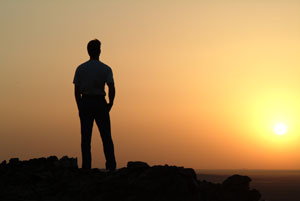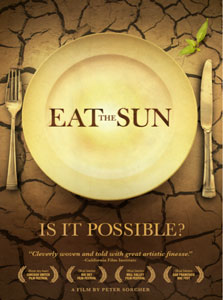 Our lives depend on the sun. It’s a source of heat and light, it fuels the photosynthesis that give us food, it allows our bodies to produce vitamin D. But can our bodies get energy directly from the sun, without the intermediary of plants or animals? That question is what the documentary Eat the Sun sets out to answer.
Our lives depend on the sun. It’s a source of heat and light, it fuels the photosynthesis that give us food, it allows our bodies to produce vitamin D. But can our bodies get energy directly from the sun, without the intermediary of plants or animals? That question is what the documentary Eat the Sun sets out to answer.
Eat the Sun, directed by Peter Sorcher, follows Mason Dwinell as he works towards a goal of staring directly at the sun for 44 consecutive minutes per day. Mason is a student of Hira Ratan Manek, known as HRM, an Indian Jain guru who promotes the practice of sun gazing and claims to have not eaten any solid food since 1995.
Sun worship is a part of many spiritual practices, but HRM promotes the idea that sungazing also enables physical healing, and takes away the need to eat. HRM claims to have done several fasts under strict medical observation, once subsisting only on water and sunlight for 411 days. This point is a stumbling block for Mason, who explains that he no longer feels physical hunger but still eats due to societal pressures and for emotional reasons. Peter, a small crew and Mason set off on a journey across the U.S. to meet other sungazers, in addition to a number of scientists and doctors.
 The filmmaker creates a compelling story arc from this fascinating practice, and does a judicious job of balancing the opinions of skeptics and believers. HRM’s testimonial seems too far out to be believed, so the director sends a photographer to tail HRM.
The filmmaker creates a compelling story arc from this fascinating practice, and does a judicious job of balancing the opinions of skeptics and believers. HRM’s testimonial seems too far out to be believed, so the director sends a photographer to tail HRM.
Before any of our readers set out to stare at the sun for weight loss or health reasons, it should be noted that nearly every medical expert interviewed in the documentary says it is unsafe to look directly at the sun, and vision damage is a repercussion for some of the film’s characters.
You can catch Eat the Sun on the Documentary Channel or find out about other screenings by visiting EatTheSunMovie.com.
Also Read:
